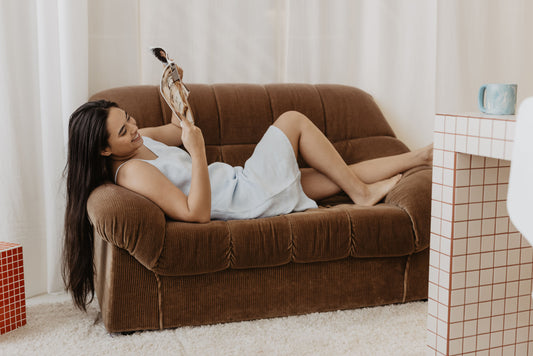
How to Build a Capsule Wardrobe with Eco-Friendly Fabrics
Share
In today’s fast-paced world, the concept of a capsule wardrobe has gained immense popularity. Not only does it simplify your daily dressing routine, but it also promotes sustainability by encouraging mindful consumption. In this blog post, we’ll explore how to build a capsule wardrobe using eco-friendly fabrics, ensuring that your fashion choices are both stylish and environmentally conscious.
1. Understanding the Capsule Wardrobe Concept
A capsule wardrobe is a curated collection of versatile, timeless pieces that can be mixed and matched to create a variety of outfits. The goal is to have a smaller, more intentional wardrobe that meets all your needs without excess.
2. Why Choose Eco-Friendly Fabrics?
Eco-friendly fabrics are produced with minimal environmental impact. They are often biodegradable, require less water and energy to produce, and avoid harmful chemicals. By choosing these fabrics, you contribute to a more sustainable fashion industry.
3. Key Eco-Friendly Fabrics to Consider
- Linen: Made from the flax plant, linen is durable, breathable, and biodegradable. It’s perfect for both summer and winter wardrobes.
- Organic Cotton: Grown without synthetic pesticides or fertilizers, organic cotton is soft, versatile, and gentle on the skin.
- Hemp: Hemp fabric is strong, durable, and requires minimal water to grow. It’s also naturally resistant to pests.
- Tencel (Lyocell): Made from sustainably sourced wood pulp, Tencel is soft, breathable, and biodegradable.
- Recycled Fabrics: Fabrics made from recycled materials, such as recycled polyester, help reduce waste and conserve resources.
4. Building Your Capsule Wardrobe
Step 1: Assess Your Lifestyle and Needs Consider your daily activities and the types of clothing you need. Do you work in an office, or is your lifestyle more casual? This will help you determine the essential pieces for your wardrobe.
Step 2: Choose a Color Palette Select a cohesive color palette that includes neutral tones and a few accent colors. This makes it easier to mix and match your pieces.
Step 3: Invest in Quality Basics Start with high-quality basics that form the foundation of your wardrobe. Think classic pieces like a white organic cotton t-shirt, a linen button-down shirt, and a pair of hemp trousers.
Step 4: Add Versatile Layers Incorporate versatile layers such as a Tencel cardigan, a recycled polyester jacket, and a linen jacket. These pieces can be dressed up or down depending on the occasion.
Step 5: Include Statement Pieces Add a few statement pieces that reflect your personal style. This could be a bold-colored hemp dress or a patterned linen skirt.
Step 6: Accessorize Thoughtfully Choose eco-friendly accessories like a recycled fabric tote bag, a hemp hat, or organic cotton scarves to complete your outfits.
5. Caring for Your Eco-Friendly Wardrobe
Proper care extends the life of your clothing. Follow these tips to maintain your eco-friendly fabrics:
- Wash Less Frequently: Only wash your clothes when necessary to reduce wear and tear.
- Use Cold Water: Washing in cold water saves energy and preserves fabric quality.
- Air Dry: Whenever possible, air dry your clothes to prevent damage from high heat.
- Repair and Upcycle: Mend any small tears or holes and consider upcycling old pieces into new items.
Conclusion
Building a capsule wardrobe with eco-friendly fabrics is a rewarding way to embrace sustainable fashion. By choosing quality, versatile pieces made from environmentally conscious materials, you can create a stylish and functional wardrobe that aligns with your values. Start small, be intentional, and enjoy the simplicity and elegance of a well-curated wardrobe.



